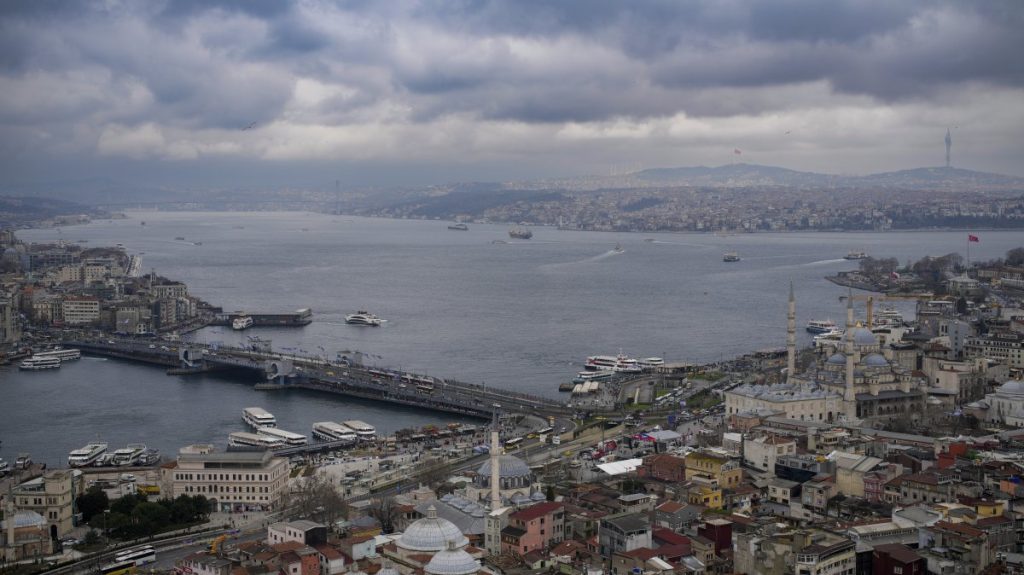The April 23 quake that hit Istanbul with a 6.2 magnitude should be viewed as a “warning” rather than a release of major seismic energy, an earthquake expert said.
“Since the 1999 Gölcük and Düzce earthquakes (in the Marmara region of northwestern Türkiye), we have been anticipating a magnitude 7.4-7.5 earthquake along the fault line. Fortunately, the recent quake registered at 6.2, and there were no fatalities or devastation,” Japanese earthquake expert Yoshinori Moriwaki told Daily Sabah in an exclusive interview.
However, Moriwaki, a master architect and civil engineer, added that the danger is far from over and said, “It was only a warning.”
A 6.2 magnitude earthquake struck the city of Istanbul, near the Silivri district, at 12:49 p.m. on April 23, alarming millions of residents. Since then, the city has experienced hundreds of smaller aftershocks, including another notable 4.9 magnitude earthquake that occurred later the same day at 3:12 p.m.
Moriwaki added that each whole-number step (e.g., 6.0 to 7.0) releases about 32 times more energy. Therefore, an earthquake with a magnitude above 7.0 will be substantially more energetic than a 6.3 magnitude earthquake. “The April 23 earthquake is far from undermining the potential the fault line holds,” Moriwaki added.
“Now that the fault line is ruptured, we no longer expect such a large earthquake. It may be around 7.0 to 7.1 magnitude, slightly above 7.0.”
Moriwaki added that it is also not possible to predict when the next big earthquake will occur. “Normally, we would estimate that it may happen in about 20-30 years. However, we can say that the intermediate fault line near Silivri, in the Istanbul district, has been triggered. Therefore, it can be expected not in 20 years, but rather in 12 to 15 years. I don’t think it will happen in one to five years, but it is quite close.”
The Marmara region and the entire country of Türkiye are earthquake-prone areas, characterized by several significant fault lines. The most recent Maraş earthquake, which occurred on Feb. 6, 2023, struck 11 provinces with two separate major earthquakes, registering magnitudes of 7.7 and 7.6 on the same day, followed by thousands of aftershocks in the days that followed. According to official figures, the total number of people who died in the disaster was 53,537.
Why Istanbul is at risk
Moriwaki also claimed that an earthquake of magnitude 7.0 or higher is likely to occur due to the number of strong quakes throughout the history of Istanbul and Anatolia.
“In 1509 and 1766, during the Ottoman period, Istanbul was shaken by destructive earthquakes. While there are no precise records from that time, it is presumed that their magnitudes ranged from 7.4 to 8. There were 257 years between these two major events, suggesting that enough energy could have accumulated to trigger another earthquake above magnitude 7.0 by 2023.” Moriwaki said.
These earthquakes are believed to occur along the North Anatolian Fault (NAF), which runs beneath the Sea of Marmara, just south of Istanbul. Major quakes along this fault are common, and the April 23 earthquake is just the latest link in the chain. The most destructive ones occurred in Erzincan in 1939, which had one of the highest death tolls in Anatolia with 32,968 people, and followed by Tokat (1942), Samsun (1943), Bolu (1944), Erzincan (1992) and Gölcük and Düzce in 1999 with a combined death toll of 19,212.
“On this fault line, major earthquakes occurred from east to west, respectively, that is why it is time to expect another large earthquake near Istanbul,” Moriwaki said.
Two faults under Sea of Marmara
The NAF, which extends from Tekirdağ to Çınarcık in the Marmara region, is not the only fault line that lies under the Sea of Marmara. There is also the South Marmara Fault, which follows the line from Gemlik to Bursa, Bandırma, Balıkesir and Çanakkale.
“You want to think of Marmara as a region, but the two faults should be considered separately,” Moriwaki said.
When he was asked if the Southern Fault also threatens Istanbul, he responded: “Of course, if there is an earthquake in the south, the north can also feel it, especially on soft ground. The same can be said vice versa.”
Despite being separate faults, both are part of one of the world’s most significant and longest fault lines, which stretches across Indonesia, Myanmar, Nepal, Afghanistan, Iran, Türkiye, Greece, Italy and Spain.
“The recent 7.7 magnitude earthquake that struck Myanmar on March 28, 2025, is part of this same series of seismic events,” Moriwaki added.

What can we do?
Despite everything, Moriwaki, who has been living in Istanbul since 1999, is not pessimistic.
“April 23 was just a warning. It was a signal that a larger earthquake is coming, so we need to be prepared. I think it’s good that it was relatively small. We can say that there is no need to panic, but we must be prepared accordingly,” he said.
Moriwaki warned the residents of Istanbul that several factors are critical when choosing a place to live.
“When buying a house, the most important factor is the ground quality, not the view. Hard ground, like in Beşiktaş, Istinye, Şişli, and 5. Levent on the European side is ideal. Rock floors are best. The seaside areas of Üsküdar and Kadıköy are less favorable due to soft ground, which causes more shaking during an earthquake. Upper parts of these districts and Ataşehir on the Anatolian side have better ground quality.”
He added, “Always verify if the building has a license, as it shows it was built under proper regulations. Before 2000, construction focused mainly on design, with less attention to ground quality. After 2000, the ground was assessed and improved if needed.”


